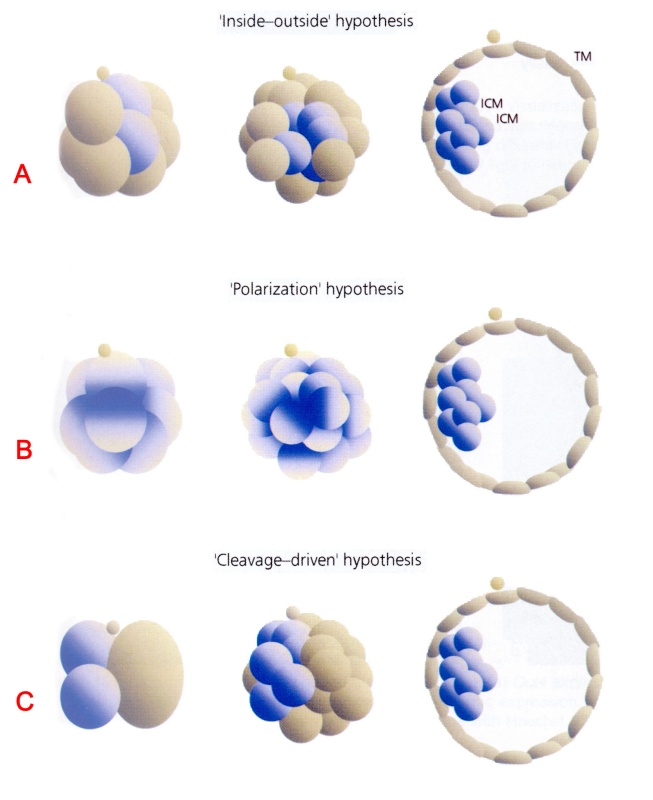(A) The 'Inside-outside hypothesis' is based on the location of blastomeres in the morula and the existence of different environments surrounding the inner and outer blastomeres. Blastomeres on the inside form the inner cell mass (embryoblast) while those on the outside form the trophoblast.
(B) The 'Polarization hypothesis' is based on the polarization of individual blastomeres where subsequent divisions generate daughter cells with different cytoplasmic compositions and fates.
(C) The 'Cleavage-driven' hypothesis is based on the early asymmetric cleavage of the stage 2 embryo. The blastomere that cleaves earlier at the 2-cell stage forms the inner cell mass (embryonic) while the slower-cleaving blastomere gives rise to the trophoblast (abembryonic).
From: Veeck and Zaninovic´, 2003. Reproduced with permission of the publisher, Francis and Taylor Group.
Click on the picture to view the full-sized image.
Keywords: blastomere, cleavage-driven hypothesis, inner cell mass (embryoblast), inside-outside hypothesis, morula, polarization hypothesis, trophoblast
Source: The Virtual Human Embryo.

